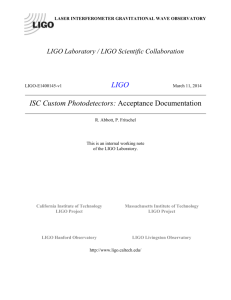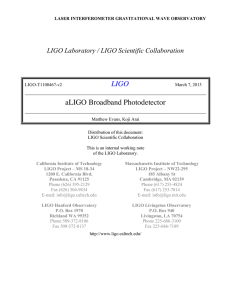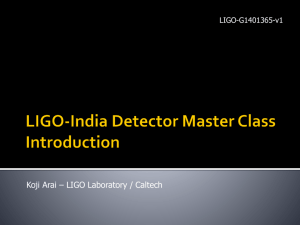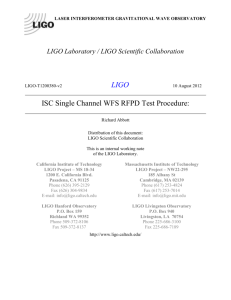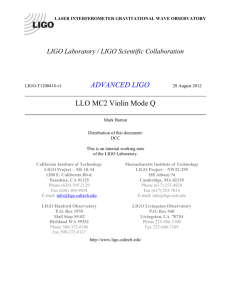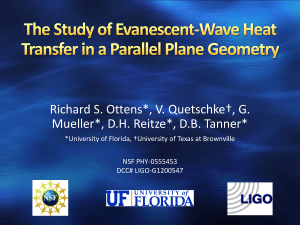T1100518-v2 - HWS intensity noise requirements - DCC
advertisement
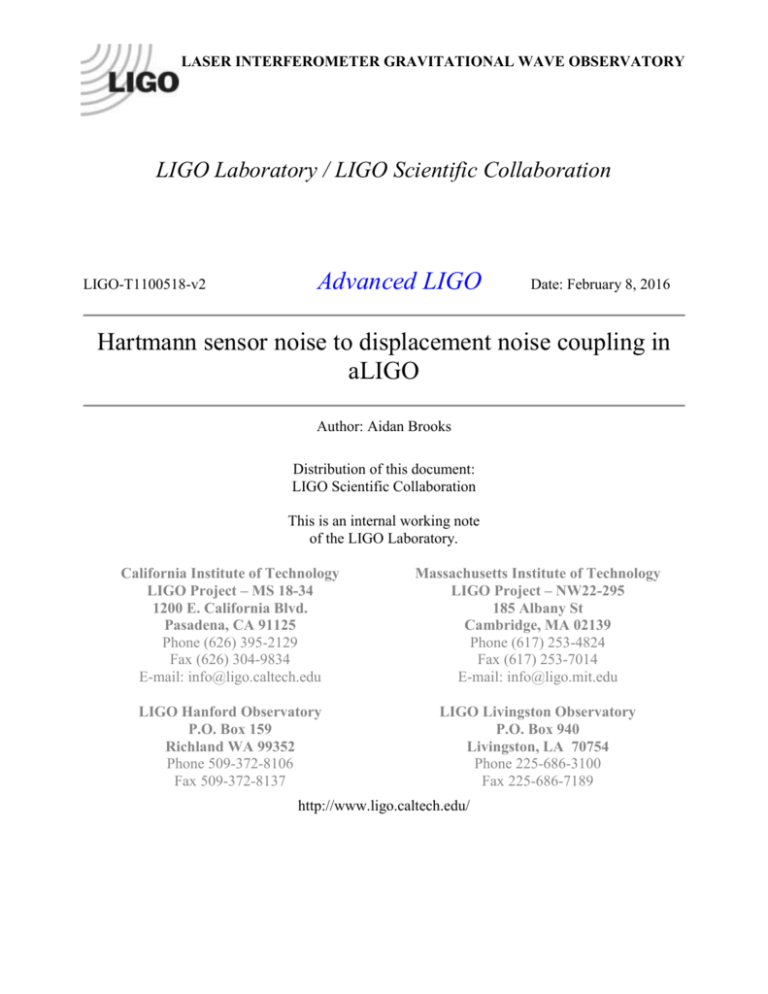
LASER INTERFEROMETER GRAVITATIONAL WAVE OBSERVATORY LIGO Laboratory / LIGO Scientific Collaboration LIGO-T1100518-v2 Advanced LIGO Date: February 8, 2016 Hartmann sensor noise to displacement noise coupling in aLIGO Author: Aidan Brooks Distribution of this document: LIGO Scientific Collaboration This is an internal working note of the LIGO Laboratory. California Institute of Technology LIGO Project – MS 18-34 1200 E. California Blvd. Pasadena, CA 91125 Phone (626) 395-2129 Fax (626) 304-9834 E-mail: info@ligo.caltech.edu Massachusetts Institute of Technology LIGO Project – NW22-295 185 Albany St Cambridge, MA 02139 Phone (617) 253-4824 Fax (617) 253-7014 E-mail: info@ligo.mit.edu LIGO Hanford Observatory P.O. Box 159 Richland WA 99352 Phone 509-372-8106 Fax 509-372-8137 LIGO Livingston Observatory P.O. Box 940 Livingston, LA 70754 Phone 225-686-3100 Fax 225-686-7189 http://www.ligo.caltech.edu/ LIGO LIGO-T1100518-v2 1 Introduction The purpose of this document is to describe the noise coupling from the Hartmann sensor to displacement noise in aLIGO and to define the noise requirements for the Hartmann sensor. 2 Radiation pressure The Hartmann sensor probe beam is injected into the interferometer and is reflected off the ITM HR surface. Radiation pressure from the Hartmann sensor probe beam will couple to displacement noise in the test mass. The displacement noise induced a beam that is reflected by a test mass (twice that for the same amount absorbed by a test mass) is: z 2P mc 2 f 2 RIN , where RIN is the relative intensity noise of the incident beam, P is the DC power reflecting off the optic, m is the mass of the optic (40kg), and c is the speed of light. This equation was adapted from eqn 2.33: [P060043 - Stephan Ballmer PhD Thesis]. For aLIGO, the power that is incident on the test mass will be the rated power of the source, Pr, multiplied by the attenuation on the HWS injection table, a1, and the attenuation by the core optics between the HWS table and the ITM, a2. For aLIGO: The maximum value of Pr is ~ 20mW, run at 70% rated output = 14mW. The transmission through the HWS table will be 50% through a polarizer and 50% through a beam splitter = 25% Transmission through the core optics to the ITM is ~7% Therefore, approximately 0.25mW will be reflected off the ITM. As shown in the top plot in Figure 1, we set the technical noise limit injected by the HWS to be 10x lower than the displacement noise sensitivity for aLIGO. Rearranging the above equation, we solve for the maximum allowed RIN for the HWS. This is plotted in the lower plot in Figure 1. The most stringent RIN limit for the HWS is 1.5 10-3 Hz-1/2 @ 20 Hz. The RIN from a Superlum SLD-381-MP super-luminescent diode and the RIN from a QPhotonics QFLD-950-3S + LDTC 0520 driver are also shown in Figure 1. The sources are significantly quieter than the intensity noise requirement. The noisiest source has a measured RIN of 6 10-5 Hz-1/2 at 15 Hz decreasing as 1/f. 2 LIGO LIGO-T1100518-v2 Figure 1: (top) aLIGO displacement noise (zero detuning, high power) and the technical noise limit for all other noise sources, (bottom) the RIN noise limit for the HWS source and the RIN from various sources. 3


